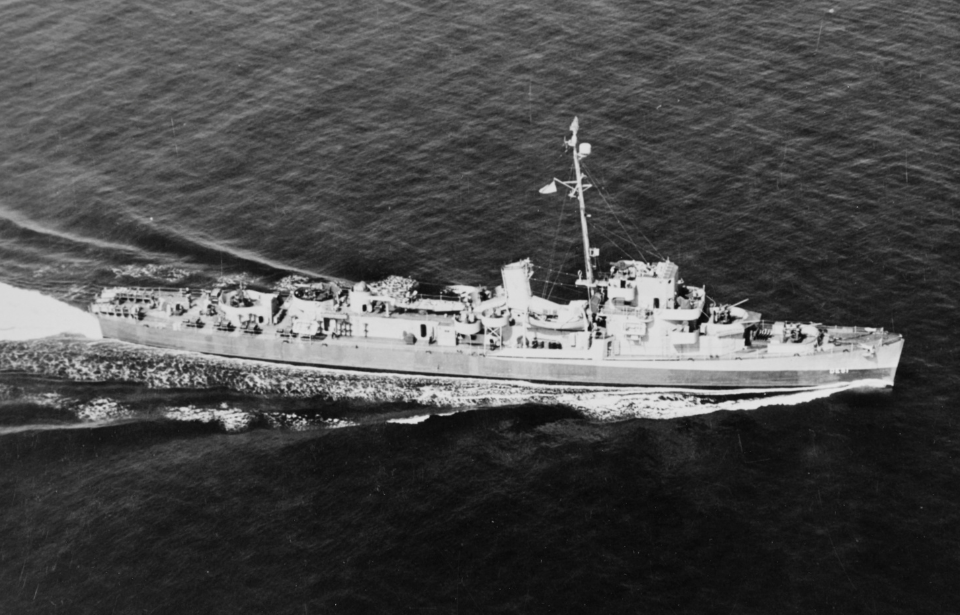The USS Buckley (DE-51) was a destroyer escort and lead ship of her class that served with the US Navy between 1943-46. During her wartime service, the vessel saw action in a hunter-killer task group throughout the Battle of the Atlantic. In 1944, Buckley came up against the German U-boat U-66. Their meeting saw the outbreak of a fierce engsgement, which included hand-to-hand combat, with a final blow being delivered to the German vessel by hand grenades.
Construction of the USS Buckley (DE-51)
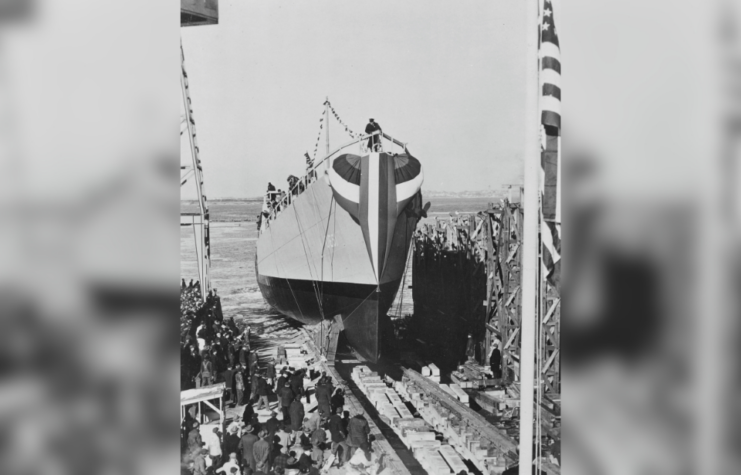
The first in her class of destroyer escorts, the USS Buckley was named after John D. Buckley, an aviation ordnanceman killed during the Japanese attack on Pearl Harbor on December 7, 1941. Her construction was sponsored by Buckley’s mother.
Buckley was launched on January 9, 1943, and commissioned into the Navy on April 30 of the same year. The destroyer escort’s first commanding officer was Lt. Cmdr. Alvin Weems Slayden, and from July 1943-April 22, 1944 operated in American waters as a training ship.
USS Buckley (DE-51) specs
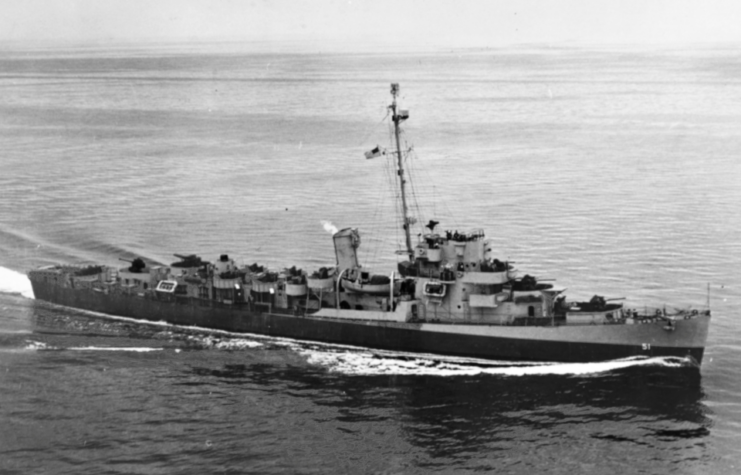
The USS Buckley had a length of 306 feet; a beam of 37 feet; and a draft of 13 feet, six inches. Powered by a Turbo-electric drive, which produced 12,000 shaft horsepower, the 1,700-ton destroyer escort and her crew of 186 could reach a top speed of 24 knots (28 MPH).
The ship was armed with an array of weapons, including three 3-inch/50 caliber guns, one quad 1.1-inch/75 caliber gun and eight single 20 mm guns. For her role in protecting against enemy submarines, Buckley was also armed with one 21-inch torpedo tube, one Hedgehog anti-submarine mortar, eight K-gun depth charge projectors and two depth charge tracks.
May 6, 1944 – a famous naval engagement
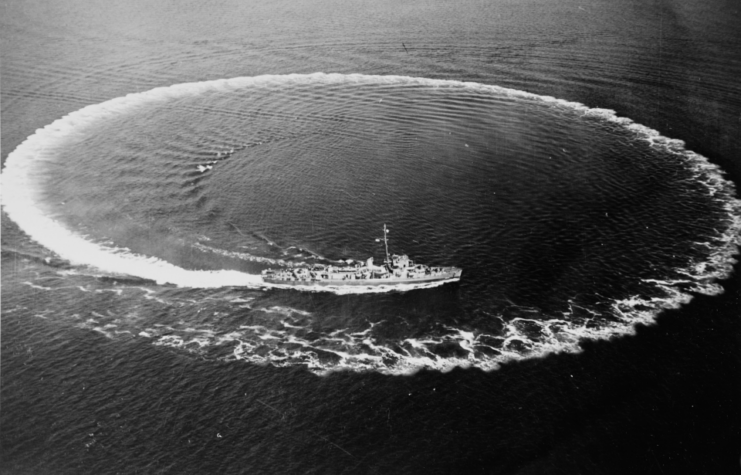
On April 22, 1944, the USS Buckley joined Hunter-killer Task Group 21.11 (TG 21.11), entering the Battle of the Atlantic. She was tasked with searching the North Atlantic and Mediterranean convoy routes for German U-boats. By May, Buckley was operating off the coast of the Cape Verde Islands, west of Africa.
In the early hours of May 6, General Motors TBM Avengers and Grumman F4F Wildcats with Composite Squadron Fifty-Five (VC-55), aboard the USS Block Island (CVE-21), reported sighting a U-boat roughly 390 miles west of Cape Verdes. Buckley followed up on this and began following the German vessel.
At 2:16 AM, an Avenger picked up a radar contact about 20 miles from the ship. Buckley, under the command of Lt. Cmdr. Brent Abel, ordered the destroyer escort to turn toward the contact. She sailed at full speed toward the U-boat, all the time being given updates on course changes from the overhead aircraft.
As the gap between Buckley and the U-boat closed, U-66 exhausted her supplies and sailed the surface, recharging her batteries and waiting for a supply ship to arrive. At 3:08 AM, the German vessel fired three flares, believing the approaching ship was just that. The gap between the two had narrowed down to 4,000 yards when U-66 realized the true identity of the approaching ship.
USS Buckley (DE-51) versus U-66
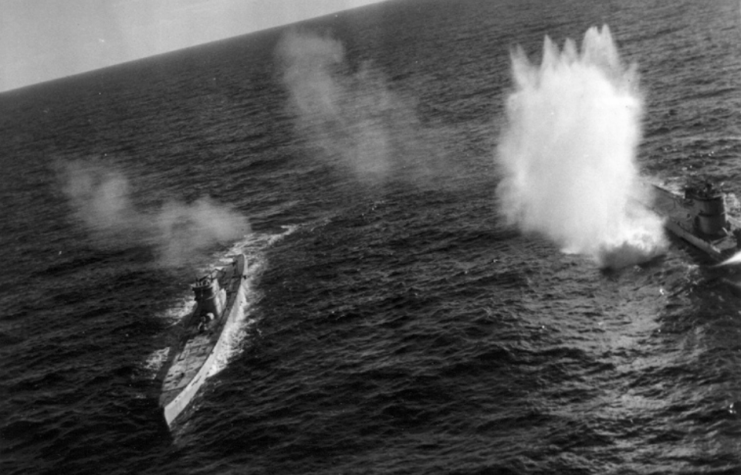
U-66 fired a torpedo, which the USS Buckley slipped by turning left; it passed the starboard side. The destroyer escort’s guns were then loaded, in preparation for the coming fight. The U-boat was the first to open fire, with her sailors firing machine guns. At 3:20 AM, Buckley returned fire, with the first salvo of her three-inch guns scoring a hit on U-66’s forecastle, ahead of the conning tower.
All of the guns that could fire upon the U-boat did. After a short ceasefire as U-66 moved out of range, Buckley re-engaged with shells scoring hits on the U-boat’s conning tower. U-66 ceased returning fire and began moving erratically. Putting distance between herself and Buckley, she fired a torpedo from her stern tubes. Seeing the torpedo coming, however, Buckley turned hard right, and it narrowly missed the destroyer escort’s bow.
A chase then began. U-66 tried to maneuver away, zig-zagging back and forth, which was mimicked by Buckley. It only took a few minutes for the destroyer escort to catch up and begin raining shells down upon the U-boat. All this time, the pilot of the TBM Avenger, LTJG. Jimmie J. Sellars, reported back to the lead ship of the task group. This play-by-play sounded more like a comic book, and the excitement in Sellars’ voice was obvious.
“Buckley has opened fire – sub is returning fire,” he radioed. “Boy! I have never before seen such concentration! Buckley is cutting [the] hell out of the conning tower!”
At 3:29 AM, Buckley moved into a position to ram U-66. She rammed the U-boat, bending her own bow, and U-66 became locked to the destroyer escort. Out of the burning vessel came German sailors – some prepared to surrender, others ready to fight.
Escalating to hand-to-hand combat
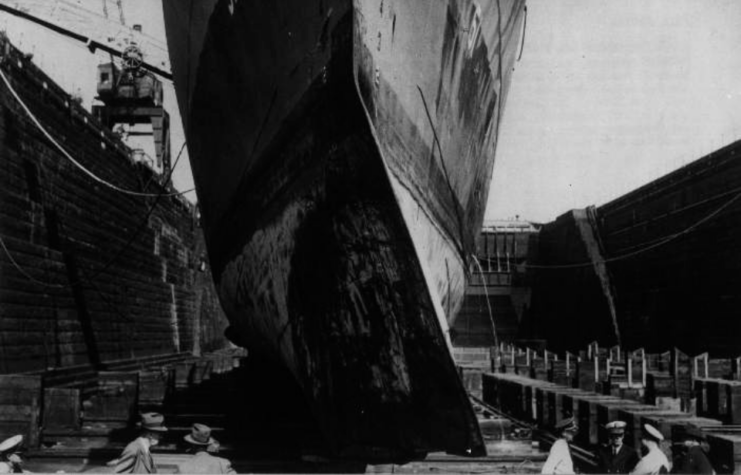
Hand-to-hand combat broke out as the Germans abandoned the burning U-boat and boarded the USS Buckley. The crew of the destroyer escort responded in kind, picking up weapons and anything they could get their hands on to fight off the enemy. Those with small arms fired at the Germans, and those who didn’t made do with what they had. One of Buckley’s gun crewmen threw empty shell casings, and a few sailors grabbed the closest objects, which happened to be coffee mugs and a coffee pot.
This hand-to-hand fighting only lasted a few minutes, as Buckley reversed away from U-66. The only American injury was caused when a crewman punched one of the German sailors.
Now free from Buckley’s bow, the crew who remained aboard the U-boat brought her around and rammed into the vessel, making a hole in the engine room and breaking off ship’s starboard propeller shaft. The U-boat then disengaged and began to sail away, albeit slowly. Before she could create any sort of distance, however, the sailors aboard Buckley threw hand grenades into the flame-filled conning tower. U-66 began to sink, with the remnants of her crew abandoning ship.
The end of U-66 was recorded in Buckley’s Action Report: “Sub clears and passes astern, still making about 15 knots. No. 3 3 [inch] gun scores three direct hits on conning tower. Sub disappears under surface of the water at this speed under diesel power with conning tower hatch open and fire blasting from it, apparently completely abandoned and out of control. Forward deck hatch also open. Entire action has lasted 16 minutes.”
Once the fighting had ceased and U-66 was sunk, Buckley picked up 36 survivors. During the engagement, which lasted less than 20 minutes, she used one hundred and five 3-inch rounds, twenty-seven hundred 20 mm rounds and four hundred and eighteen 40 mm rounds. In the hand-to-hand combat, 390 rounds of various types were used.
More from us: The USS Stickleback (SS-415) Was Sunk In a Collision During An Anti-Submarine Exercise
Are you a fan of all things ships and submarines? If so, subscribe to our Daily Warships newsletter!
Buckley was awarded the Navy Unit Commendation for what she accomplished, sailing back to the US for much-needed repairs. She went go on to serve until her decommissioning on July 3, 1945, and was stricken from the Naval Register 33 years later.
